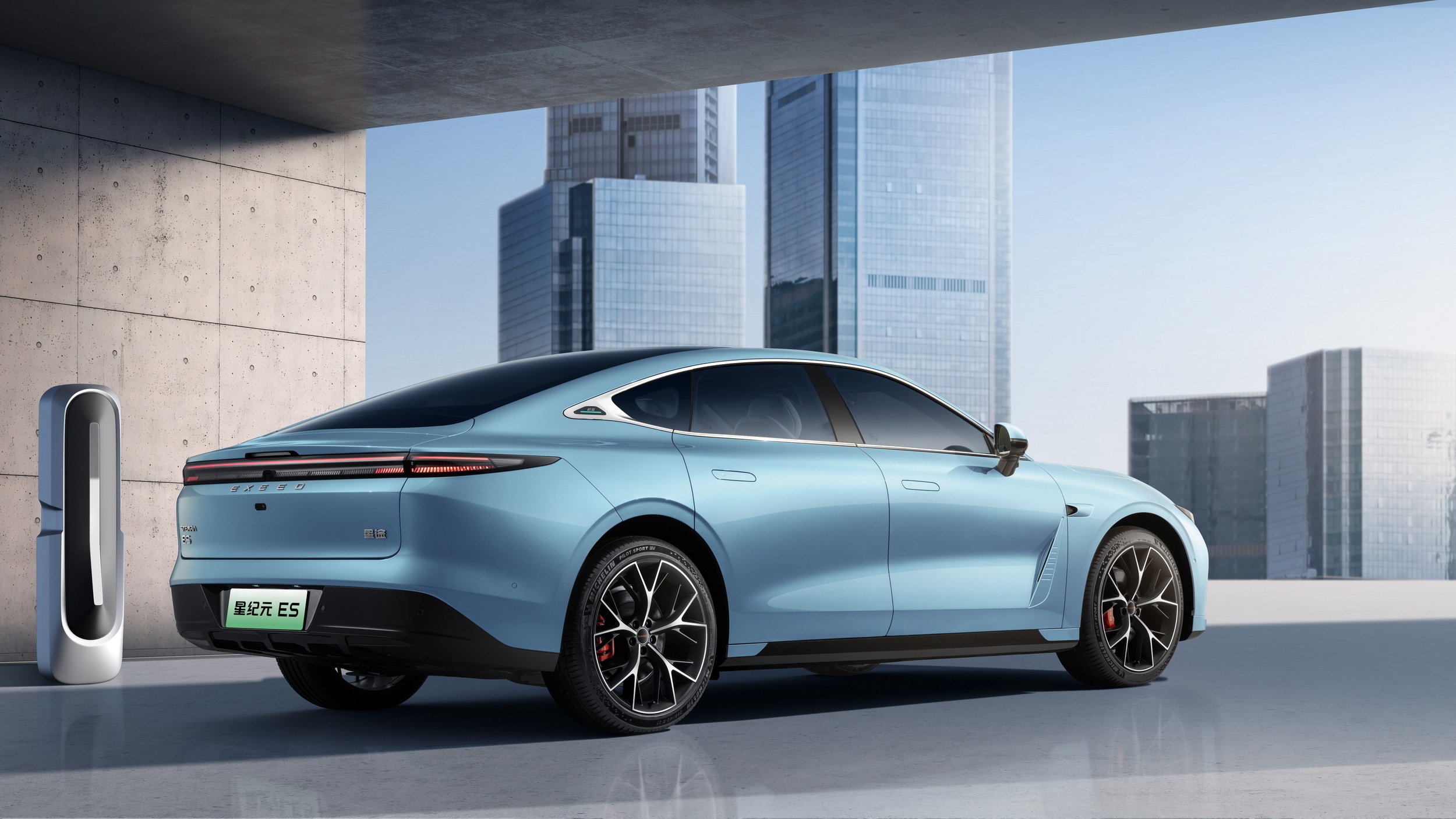- Chery’s crash test used three real electric cars to simulate a U-turn accident scenario.
- The EV was hit by two other vehicles traveling at 60 km/h (37 mph) from opposite directions.
- The passenger compartment and battery pack withstood the forces from the dual impact.
When an automaker willingly puts its own vehicle to the test in front of an audience, you know it means business. Chinese automaker Chery demonstrated its confidence in the safety of its EVs by performing a very demanding crash test on camera. The triple-car collision showcased the strength of the 2025 Exeed Sterra ES chassis and the integrity of its battery pack, all in front of an audience of media representatives.
The crash test took place in Tianjin, China, with support from the China Automotive Technology and Research Centre (CATARC). Unlike the typical crash trolleys used in standard tests, Chery opted for three actual Exeed Sterra ES vehicles, aiming for a more realistic simulation.
The Crash Test Setup
The scenario aimed to replicate a real-world situation, but there are two key caveats. First, it involves a static car attempting a U-turn, only to be struck from both sides by two other vehicles. The main difference here is that, in an actual U-turn accident, the turning vehicle would likely be moving when struck. Additionally, it’s unrealistic to assume both other cars would be traveling at exactly the same speed. More on that later, but it’s important to keep these factors in mind when evaluating the test.
More: Chery Hunting Wild Concept Previews New Wagon With Solid-State Batteries
Two white Sterra ES EVs, each traveling at 60 km/h (37 mph), struck the red vehicle from opposite angles. One car impacted the front-right corner at a 30-degree angle, while the other slammed directly into the passenger compartment from 180 degrees. While a challenging crash for any car, the footage and photos suggest that the Exeed Sterra ES maintained a strong level of protection for its occupants.
Despite enduring forces approaching 35 tons (70,000 pounds), the Exeed Sterra ES appears to have maintained its structural integrity, keeping the test dummies protected inside.
Chery reports that the pillars withstood the impact, all seven airbags deployed as expected, and the doors automatically unlocked. The emergency call function was also activated, adding an extra layer of safety. Crucially, the battery pack showed no signs of leaks, smoke, or fire, while the high-voltage system shut down automatically, as it should in the event of a crash.
The Need for Independent Validation
While Chery’s self-conducted crash test is certainly impressive, there’s always the question of how the Exeed Sterra ES would perform under the more stringent scrutiny of third-party evaluations from agencies like EuroNCAP or IIHS. After all, it’s one thing to conduct your own tests, but the true measure of safety comes when those tests are held to the rigorous standards set by industry authorities.
Also keep in mind that having one car stationary in the crash test affects realism by concentrating impact forces on the moving vehicles, which doesn’t replicate how energy is distributed in a real-world collision. In an actual U-turn accident, all vehicles would be in motion, dissipating force across the crash. By keeping one car static, the test isolates the impacts, potentially exaggerating their severity and not fully capturing how the vehicles would behave in a dynamic, unpredictable real-world scenario.
Tell Me More About The Exeed Sterra ES


The Exeed Sterra ES, first launched in 2023, shares its platform with the Huawei-backed Luxeed S7. It’s part of a growing list of contenders in the electric sedan market, all aiming to dethrone the Tesla Model 3. It comes with both RWD and AWD configurations, promising an impressive driving range of up to 905 km (562 miles) of range on a full charge, thanks to its large 97.7 kWh battery pack. For the 2025 model year, Chery has introduced several updates, including reinforced body and chassis elements, further improving its safety credentials.
Chinese cars have come a long way in terms of safety, as demonstrated by their performance in independent crash tests. Many EVs from Chinese automakers have earned five-star ratings in EuroNCAP, even as the organization has introduced stricter testing protocols in recent years. The growing safety standards among Chinese manufacturers signal a broader shift, with more models becoming increasingly competitive in global markets.



















